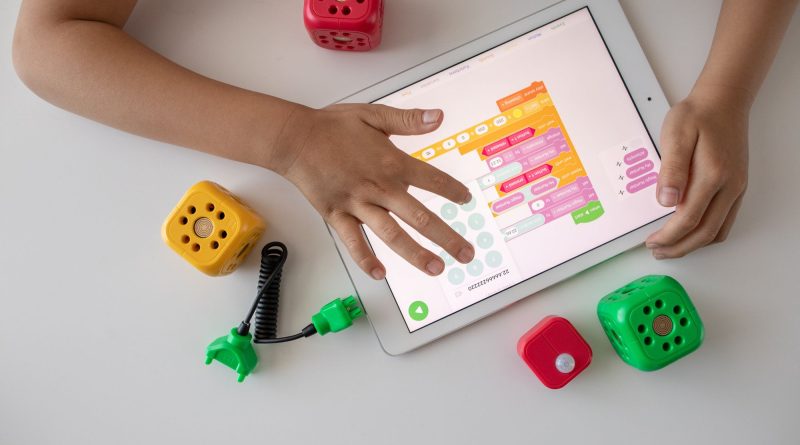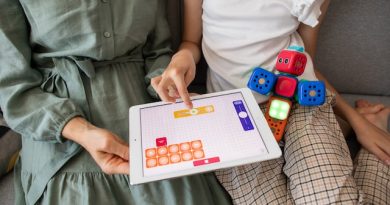Best Coding Websites for Kids
There are many different coding websites for kids to use in 2022. Not all of them are created equal, so it’s important to do your research before you choose one. In this article, we will discuss some of the best coding websites for kids and what makes them stand out from the rest.
Coding is a skill that is becoming increasingly important in the modern world. It is a form of communication that helps us to understand and interact with technology. Many jobs now require some coding skills, and even if you don’t plan your children on working in the tech industry, understanding how code works can be really helpful for them.
Why should children learn programming?
There are many reasons why we should teach kids to code and introduce the computer science world. Coding for kids is a tool which can help them to develop problem-solving skills, think creatively, and work collaboratively. It also gives them a better understanding of how the world around them works. In a world where technology is becoming more and more important, it’s essential for children to be able to navigate and understand it.
Learning to code can be really rewarding for children. They can see their progress as they build things and make them work. Plus, they get to play with computers and learn something new at the same time – what’s not to love about that?
Best coding languages for kids
There is no one-size-fits-all answer to this question, as the best computer programming language to teach a kid will vary depending on the child’s age and interests. However, some of the best programming languages for kids are:
Scratch
Scratch is a visual coding language developed by MIT. It is designed for kids aged 8 and up, and it’s one of the easiest coding languages to learn. With Scratch, you can create games, animations, and other interactive projects. Moreover , Scratch is free and open source, so you can download it and use it on your own computer.
Blockly
Blockly is a visual programming language created by Google. It is also designed for kids aged 8 and up, and it’s very easy to use. With Blockly, you can create programs by putting together blocks of code. Blockly is also free and open source.
Python
Python is a text-based coding language that is recommended for kids aged 10 and up. It is used in a lot of different places, including web development, scientific computing, and artificial intelligence. Python is considered to be a very readable language, which means it is easy to understand for beginners. It also has a relatively low learning curve.
There are many other coding languages out there, so have a look on the Best Coding Languages for kids in 2022 article for more
Best coding websites for kids
Some of the best free coding websites for kids with online coding classes and coding courses include:
Tynker
Tynker powers the creativity of over 60 million kids and serves thousands of schools and educators around the world. Their interactive narrative-based learning curriculum allows children to learn the fundamentals and basic coding skills with simple block-based coding puzzles before seamlessly transitioning to real-world text-based languages such as JavaScript and Python.
CodaKid
CodaKid is a kids coding platform that teaches kids how to use real programming languages and professional tools for game development, coding apps, programming drones, building websites, and more.
Code Combat
Code combat is an online game that provides coding lessons for kids. It offers tutorials for Python and JavaScript programming languages, as well as games and challenges to help your kids practice their skills.
code.org is a website dedicated to teaching people how to code. It offers tutorials and programming courses for a variety of different coding languages, as well as games and challenges to help your children practice their skills. code.org also has a section for teachers, which includes resources and lesson plans.
Scratch
As we mentioned before, Scratch is a visual programming language developed by MIT. The Scratch website offers tutorials, projects, and resources to help your kids learn how to code with Scratch. It also has a community forum where you can ask questions and share your kid’s projects.
Blockly
The Blockly website offers tutorials, challenges, and projects to help you learn how to code using block based programming language, Blockly. It also has a section for educators, which includes resources and lesson plans.
Code Monster
Code Monster is a website that teaches your kids how to code with the Python programming language. It has tutorials, challenges, and games to help them practice their coding skills.
These are just a few of the many great teaching coding websites for kids. With so many options to choose from, your kids are sure to find a website that they will enjoy and learn from!
What age can a child start coding?
While some parents may want to wait until their child is a bit older, there is no set age for when a child can start coding. Some kids may be interested and ready to start at a younger age, while others may not be interested until they are a bit older. It really varies from child to child.
If your child is showing an interest in coding, there are a few things you can do to help them get started. First, you can look for resources and materials that are geared towards kids. There are a number of great books, websites, and apps that can help your child learn about coding.
You can also try some simple coding activities with your child. These can be as simple as having them help you write a grocery list in code or creating a simple game together. Doing these activities can help your child get a feel for what coding is and how it works.
If you’re not sure where to start, there are a number of great resources out there that can help you get started teaching your child to code.



